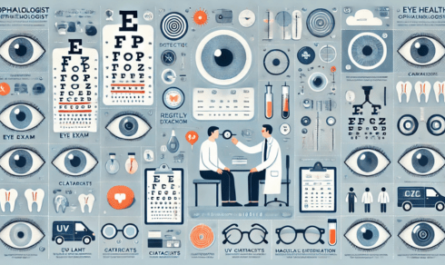1. Introduction to the Journal of Building Pathology and Rehabilitation
The Journal of Building Pathology and Rehabilitation is a key publication for professionals in the field of construction, architecture, and engineering. It focuses on diagnosing building defects, understanding their causes, and exploring innovative rehabilitation methods. This journal serves as a comprehensive resource for ensuring the longevity and safety of structures.
2. The Evolution of Building Pathology
Building pathology has evolved significantly over the years, from basic structural assessments to advanced diagnostic techniques. This field addresses the intricate issues of building failures and defects, emphasizing the need for thorough investigations and the development of effective rehabilitation strategies.
3. Importance of Building Pathology and Rehabilitation
Building pathology and rehabilitation are crucial for maintaining structural integrity and safety. They prevent potential hazards, extend the lifespan of buildings, and ensure they meet regulatory standards. This discipline helps in safeguarding investments and improving the quality of built environments.
4. Key Concepts in Building Pathology
Understanding the fundamental concepts of building pathology is essential for professionals. These include the identification of building defects, analysis of deterioration processes, and implementation of remediation strategies. A solid grasp of these concepts aids in effective problem-solving and maintenance.
5. Common Building Defects and Their Causes
Building defects can arise from various factors such as poor design, substandard materials, environmental conditions, and aging. Common issues include cracks, moisture infiltration, material degradation, and structural weaknesses. Identifying these defects early is critical for successful rehabilitation.
6. Diagnostic Techniques in Building Pathology
Advanced diagnostic techniques are employed to detect and analyze building defects. These include non-destructive testing methods like infrared thermography, ultrasonic testing, and ground-penetrating radar. Accurate diagnostics are the foundation for developing effective repair and maintenance plans.
7. Role of Material Science in Building Pathology
Material science plays a pivotal role in building pathology by providing insights into the properties and behaviors of construction materials. Understanding material performance under various conditions helps in predicting potential failures and selecting appropriate rehabilitation materials.
8. Case Studies in Building Rehabilitation
Case studies provide valuable lessons and practical insights into building rehabilitation projects. They highlight successful interventions, challenges faced, and innovative solutions applied. Reviewing case studies helps professionals learn from real-world experiences and improve their practices.
9. Structural Assessment and Evaluation
Structural assessment involves a comprehensive evaluation of a building’s condition. This process includes visual inspections, load testing, and structural analysis to determine the extent of defects and deterioration. Accurate assessment is crucial for planning effective rehabilitation strategies.
10. Moisture Problems and Solutions
Moisture infiltration is a common issue in buildings, leading to problems like mold growth, material degradation, and structural damage. Addressing moisture problems involves identifying sources, improving drainage, and using moisture-resistant materials. Effective solutions enhance building durability.
11. Importance of Building Maintenance
Regular maintenance is essential for preventing building defects and prolonging the lifespan of structures. A proactive maintenance plan includes routine inspections, timely repairs, and upgrades to meet current standards. Effective maintenance reduces the need for extensive rehabilitation.
12. Rehabilitation Techniques for Historic Buildings
Historic buildings require specialized rehabilitation techniques to preserve their cultural and architectural value. These techniques include careful restoration of original materials, using compatible modern materials, and adhering to conservation principles. Proper rehabilitation maintains historic integrity.
13. Sustainable Building Rehabilitation
Sustainable rehabilitation practices focus on minimizing environmental impact and promoting resource efficiency. These practices include using eco-friendly materials, improving energy efficiency, and implementing green building standards. Sustainable rehabilitation contributes to environmental conservation.
14. Role of Technology in Building Pathology
Technology has revolutionized building pathology with tools like Building Information Modeling (BIM), drones for aerial inspections, and advanced simulation software. These technologies enhance diagnostic accuracy, streamline rehabilitation processes, and improve overall project outcomes.
15. Seismic Rehabilitation of Buildings
Seismic rehabilitation involves strengthening buildings to withstand earthquakes. Techniques include retrofitting structural elements, using base isolators, and reinforcing foundations. Seismic rehabilitation ensures the safety and resilience of buildings in earthquake-prone areas.
16. Fire Damage Assessment and Rehabilitation
Fire damage assessment involves evaluating the extent of structural and material damage caused by fires. Rehabilitation strategies include replacing damaged materials, reinforcing structures, and implementing fire-resistant designs. Effective rehabilitation restores safety and functionality.
17. Corrosion and Its Impact on Buildings
Corrosion, particularly in reinforced concrete structures, can lead to significant structural damage. Understanding the causes of corrosion, such as environmental exposure and material defects, is crucial for developing effective prevention and rehabilitation strategies.
18. Rehabilitation of Concrete Structures
Concrete structures are prone to issues like cracking, spalling, and carbonation. Rehabilitation techniques include repairing cracks, applying protective coatings, and using corrosion inhibitors. Proper rehabilitation restores the structural integrity and durability of concrete buildings.
19. Role of Engineers and Architects in Rehabilitation
Engineers and architects play a critical role in building rehabilitation by diagnosing defects, designing repair strategies, and overseeing rehabilitation projects. Their expertise ensures that rehabilitation efforts are technically sound and meet safety standards.
20. Policy and Regulations in Building Rehabilitation
Regulatory frameworks and building codes guide the rehabilitation process, ensuring safety, quality, and compliance. Staying updated with policies and regulations is essential for professionals involved in building pathology and rehabilitation to ensure their projects meet legal requirements.
21. Economic Aspects of Building Rehabilitation
Building rehabilitation involves significant financial considerations, including cost estimation, budgeting, and funding. Understanding the economic aspects helps in planning cost-effective rehabilitation projects that deliver value while maintaining financial feasibility.
22. Community Involvement in Rehabilitation Projects
Engaging the community in rehabilitation projects fosters support and ensures that the outcomes meet local needs and expectations. Community involvement includes consultations, feedback sessions, and collaboration with stakeholders, enhancing the project’s success and sustainability.
23. Training and Education in Building Pathology
Continuous training and education are vital for professionals in building pathology and rehabilitation. Programs and courses provide updated knowledge, skills, and best practices, ensuring that practitioners stay informed about the latest developments and technologies.
24. Future Trends in Building Pathology and Rehabilitation
The field of building pathology and rehabilitation is continually evolving, with emerging trends such as smart materials, sustainable practices, and advanced diagnostic tools. Keeping abreast of these trends helps professionals innovate and improve their rehabilitation strategies.
25. Conclusion: The Vital Role of Building Pathology and Rehabilitation
In conclusion, the Journal of Building Pathology and Rehabilitation highlights the importance of maintaining and restoring buildings to ensure safety, functionality, and longevity. By understanding building defects, employing advanced diagnostics, and implementing effective rehabilitation techniques, professionals can preserve our built environment for future generations. This journal serves as an indispensable resource for staying informed and advancing the field.



